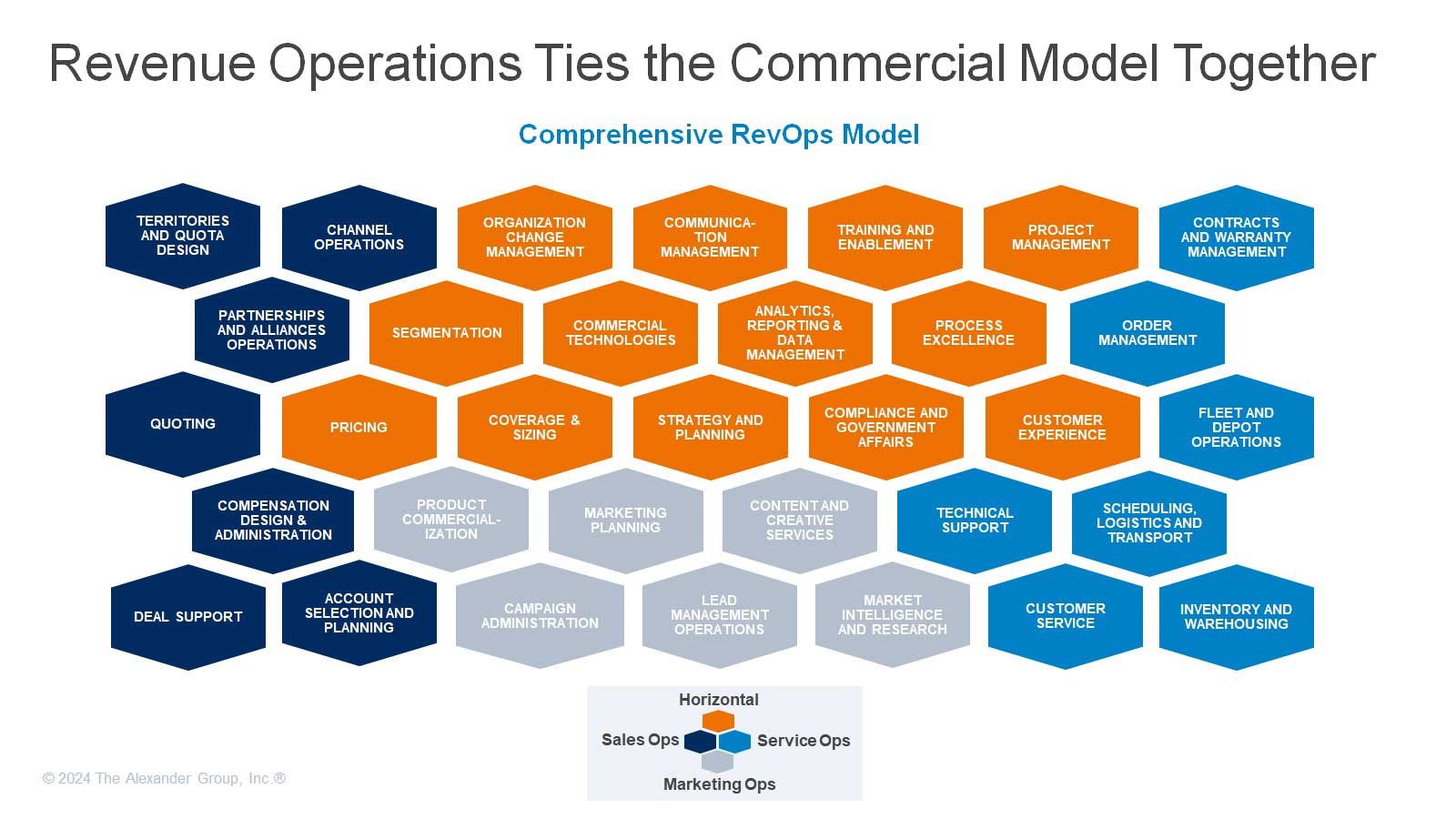Performance Mindset
High performing RevOps organizations outperform peers with 1.6x higher EBITDA margin and expected growth, a vast majority met their 2023 revenue targets, and are forecasting twice as much (2x) investment in sales and marketing compared to peers. For 2024, they plan to continue headcount increases in RevOps and most interestingly, they no longer use a pre-set Sales to RevOps headcount ratio to justify the spend. Workload (a heavily borrowed concept from SaaS tech organizations) is becoming a much bigger driver of RevOps size. As you consider the digital element and the digital engagement that RevOps is required to drive in your organization, consider the number of deals and campaigns that you have active, the complexity in your workload and then derive the required RevOps headcount to manage it.
With this incremental headcount, high-performing RevOps functions are aiming high: increase sales and marketing collaboration, improve the customer experience, enhance data management, boost transparency and invest in software and automation. On the “tech tools” front specifically, they are investing in predictive and prescriptive tools to drive both stronger forward and backward-looking insights. A word of caution: these tools are not cheap, making it crucial that companies understand the individual capabilities of their sales force before investing.
How Does Your RevOps Function Stack Up?
The following checklist – ask-yourself-questions, really – includes the top five:
- Does your RevOps team have a clear charter & scope of accountabilities?
- Do you have the right talent, roles and headcount to execute against your charter?
- Does your technology stack enable the RevOps team to focus across the customer journey?
- Does your organization have visibility to the correct metrics to understand organizational performance & revenue growth trends, risks and opportunities?
- Do the metrics & processes you use to assess the effectiveness of your RevOps team align with the corporate strategy?
Once you’ve answered those questions for your organization, you’ll have a good idea of your Revenue Operations current state as well as where to look as you continue to optimize the functions around RevOps.






